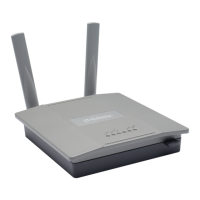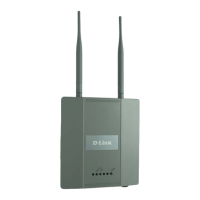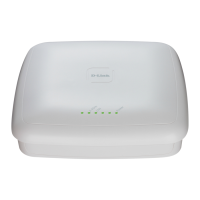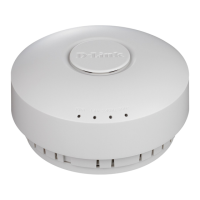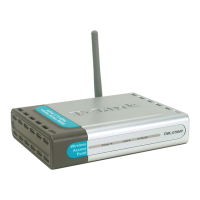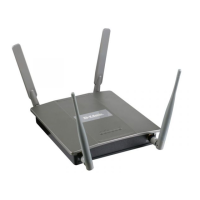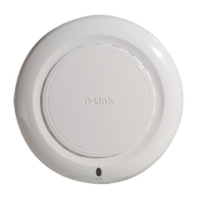Configuring Advanced Settings
D-Link Unified Wired and Wireless Access System
Oct. 2015 Page 598
D-Link UWS User Manual
The traps specified in Table 349 below are generated only by the Cluster Controller unless otherwise specified.
Table 349: SNMP Traps
Field Description
AP Failure Traps If you enable this field, the SNMP agent sends a trap if an AP fails to associate or
authenticate with the switch.
AP State Change Traps If you enable this field, the SNMP agent sends a trap for one of the following reasons:
• Managed AP Discovered
• Managed AP Failed
• Managed AP Unknown Protocol Discovered
• Managed AP Load Balancing Utilization Exceeded
Client Failure Traps If you enable this field, the SNMP agent sends a trap if a wireless client fails to
associate or authenticate with an AP that is managed by the switch.
Client State Change
Traps
If you enable this field, the SNMP agent sends a trap for one of the following reasons
associated with the wireless client:
• Client Association Detected
• Client Disassociation Detected
• Client Roam Detected
Peer Switch Traps If you enable this field, the SNMP agent sends a trap for one of the following reasons
associated with a peer switch
• Peer Switch Discovered
• Peer Switch Failed
• Peer Switch Unknown Protocol Discovered
• Configuration command received from peer switch. (The switch need not be
Cluster Controller for generating this trap.)
RF Scan Traps If you enable this field, the SNMP agent sends a trap when the RF scan detects a new
AP, wireless client, or ad-hoc client.
Rogue AP Traps If you enable this field, the SNMP agent sends a trap when the switch discovers a
rogue AP. The agent also sends a trap every Rogue Detected Trap Interval seconds
if any rogue AP continues to be present in the network.
TSPEC Traps If you enable this field, the SNMP agent sends a trap when the following TSPEC-
related events occur:
• An authorized WMM client is repeatedly using more bandwidth than was
allocated for its traffic stream.
• A WMM-enabled client is sending prioritized traffic without authorization to use
admission controlled resources.
WIDS Status Traps If you enable this field, the SNMP agent sends a trap for one of the following reasons:
• This switch has become Cluster Controller
• Rogue Client detected
• Rogue Client(s) continue to exist, after every Rogue Detected Trap Interval
seconds
• Maximum number of Managed APs in the peer group exceeded

